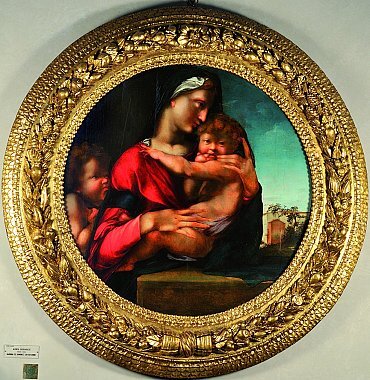Norma e Capriccio at the Galleria degli Uffizi

The Galleria degli Uffizi hosts from March 5 to May 26 the exhibition “Norma e Capriccio. Spanish artists in Italy in the early Mannerist period”, dedicated to the Spanish artists that lived and worked in Italy among Florence, Rome and Naples at the beginning of the 1500s taking part personally in the intense cultural activity of those years.
This particular event has been inspired by the words of Michelangelo Buonarroti recorded by Francisco De Hollanda in his “Roman Dialogues”: “Thus I also say that no nation and no people (other than one or two Spaniards) can perfectly assimilate or imitate the Italian manner of painting (which is that of ancient Greece) without being immediately and easily recognised as foreigners, however much they may try or work at it”.
Among these personalities there are artists like Alonso Berruguete, Pedro Fernández, Pedro Manchuca, Diego de Silóe, Bartolomé Ordóñez. They are all linked by the same Iberian origin, but also by a common deep desire for exchanging views and experiences and willing to travel for these reasons. Furthermore they were all able to establish theirselves as some of the greatest artists of the European Mannerism.
The exhibition analyzes the relationship between these Iberian artists and the Italian artists of the 1500s. The Italian artists in fact recognize the important position of the Iberian ones in the cultural scene of that period.
The exhibition is divided into four sections that create a geographical partition and that combine the works of these artists with the Italian production. In the first section we find Florence and the Italian period of Alonso Berruguete, studied and examined in depth by the Italian art historians and critics Roberto Longhi e Federico Zeri. The artist's works thus appear in their entire modernity and compared with Italian artists of the same age like Andrea del Sarto, Rosso, Potormo and Jacopo Sansovino. So, it is interesting to note how the city, with its personalities, culture and atmosphere influenced Berruguete’s works.
In the second section the focus is on Rome where we find Pedro Manchuca. This artists from Toledo worked in Raphael’s workshop between 1510 and 1520. But he brought his influence also in other parts of Italy like Milan, Rome and Campania.
The third section shows some of the sculptural works by Bartolomé Ordóñez and Diego de Silóe, produced during their stay in Naples in the 1520s. These works show undeniable reflections of the Neapolitan environment, thanks to the works of the Italian artists Domenico Napolitano and Girolamo Santacroce.
Finally, the last section presents the works produced by the Iberian artists once back home. Among Valladolid, Granada and Toledo becomes in fact even more evident the heritage of their stay in Italy, that marked their style and their figurative language.











